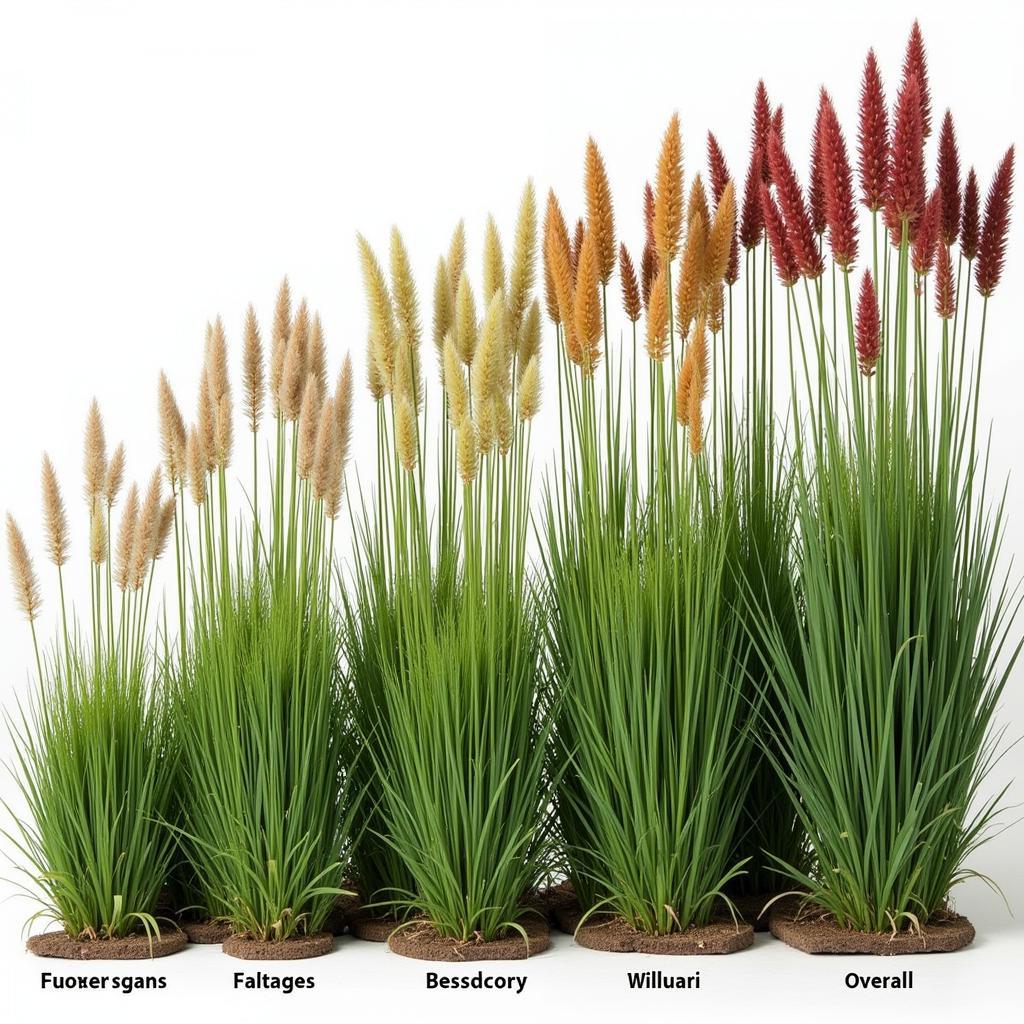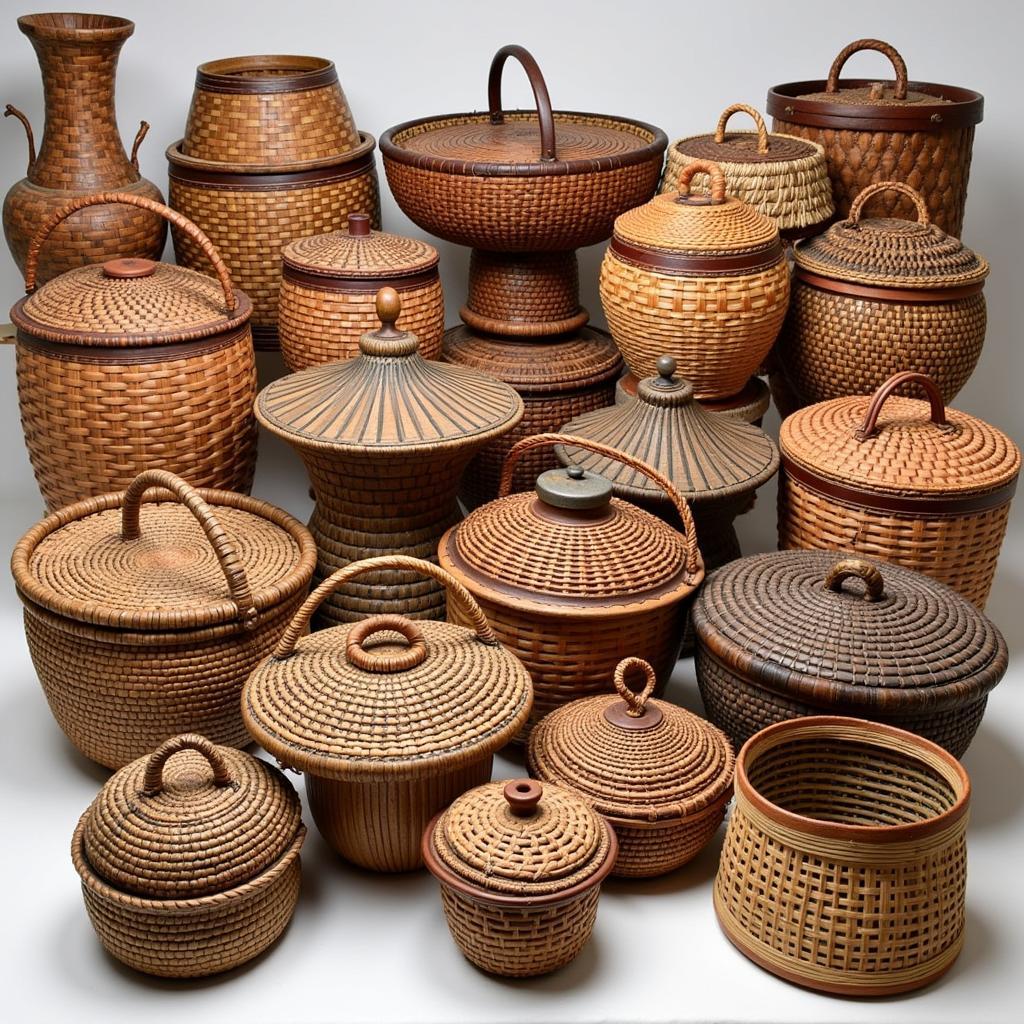The Allure of African Fountain Grass: A Gardener’s Guide
African Fountain Grass (Pennisetum setaceum), with its graceful arching foliage and fluffy flower plumes, has become a favorite ornamental grass in gardens worldwide. This article will explore the captivating beauty of this versatile plant, its various cultivars, and essential tips for cultivating and caring for African fountain grass in your garden. Let’s delve into the world of this striking and elegant grass.
African fountain grass is a warm-season perennial grass originating from Africa and the Middle East, known for its graceful, fountain-like appearance. It adds a touch of elegance and drama to any landscape, making it a popular choice for gardeners seeking low-maintenance beauty.
From its cascading foliage to its eye-catching seed heads, this grass has a lot to offer, and it’s remarkably easy to grow. Whether you’re a seasoned gardener or just starting, you’ll find valuable information here to successfully cultivate and appreciate the beauty of African fountain grass. We’ll cover everything from choosing the right cultivar to understanding its growing requirements and even how to manage its potential invasiveness. Let’s get started!
Discovering the Beauty of African Fountain Grass Varieties
African fountain grass comes in a variety of cultivars, each offering unique characteristics in terms of size, color, and texture. ‘Rubrum’, also known as red fountain grass, showcases burgundy-tinged foliage and flower plumes, adding a vibrant pop of color to garden beds. ‘Fireworks’ boasts variegated foliage with stripes of green, pink, and white, resembling a burst of fireworks in the landscape. For those who prefer a more compact form, ‘Little Bunny’ is a dwarf cultivar that reaches only about 12-18 inches tall, ideal for smaller gardens or containers. These are just a few of the many options available, allowing gardeners to select the perfect cultivar to complement their individual landscape design.
The African fire tree is another vibrant addition to any garden, just like the vibrant red fountain grass. Its fiery blooms create a stunning focal point. You might be surprised by the variety of options when exploring different African flora.
 Comparison of Different African Fountain Grass Cultivars
Comparison of Different African Fountain Grass Cultivars
Cultivating African Fountain Grass: Essential Tips for Success
African fountain grass thrives in full sun and well-drained soil. While it tolerates a range of soil types, it prefers slightly acidic to neutral pH levels. Planting in spring, after the last frost, gives the grass ample time to establish itself before the onset of winter. Spacing plants 1 to 3 feet apart, depending on the cultivar’s mature size, allows for adequate air circulation and prevents overcrowding.
Caring for Your African Fountain Grass: Watering, Fertilizing, and Pruning
African fountain grass is relatively drought-tolerant once established, requiring watering only during prolonged dry spells. Overwatering can lead to root rot, so it’s best to err on the side of caution. A light application of a balanced fertilizer in spring can promote healthy growth, but avoid over-fertilizing, as this can result in excessive foliage growth at the expense of flower production. Pruning back the foliage in late winter or early spring removes dead leaves and encourages new growth for the upcoming season. This also helps maintain the plant’s desired shape and prevents it from becoming too unruly.
Why is my African Fountain Grass Turning Brown?
Several factors can contribute to browning foliage, including excessive watering, drought stress, or winter damage. Proper watering practices and mulching around the base of the plant can help prevent these issues.
How Can I Propagate African Fountain Grass?
Division is the most common method of propagating African fountain grass. Dividing established clumps in spring allows you to create new plants and maintain the vigor of the original plant.
Managing the Invasive Potential of African Fountain Grass
In some regions, African fountain grass has shown invasive tendencies, self-seeding readily and spreading into natural areas. To prevent unwanted spread, consider planting sterile cultivars, removing spent flower plumes before they release seeds, or containing the plant within a defined area. These measures can help minimize the risk of it becoming invasive in your region.
Interestingly, the African blue bird, despite its vibrant color, blends seamlessly into its natural habitat, unlike the potentially invasive nature of African fountain grass.
Conclusion: Embrace the Elegance of African Fountain Grass
African fountain grass, with its diverse cultivars and easy care requirements, adds a touch of grace and movement to any garden setting. By understanding its growing needs and managing its potential invasiveness, you can enjoy the captivating beauty of this versatile ornamental grass for years to come.
FAQs:
- What is the ideal planting time for African fountain grass?
- How often should I water established African fountain grass?
- Can I grow African fountain grass in containers?
- What are some effective ways to prevent African fountain grass from spreading?
- When should I prune African fountain grass?
- What are some common pests or diseases that affect African fountain grass?
- Are there any non-invasive alternatives to African fountain grass?
You might find similarities in the segregation experienced by African Americans with how invasive species are treated in ecosystems, often being excluded or removed.
 African Fountain Grass in Landscape Design
African Fountain Grass in Landscape Design
Do you have other questions about African plants and wildlife? You might be interested in learning about the African fire tree.
For further assistance, please contact us at Phone Number: +255768904061, Email: kaka.mag@gmail.com or visit our address: Mbarali DC Mawindi, Kangaga, Tanzania. Our customer service team is available 24/7.


